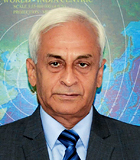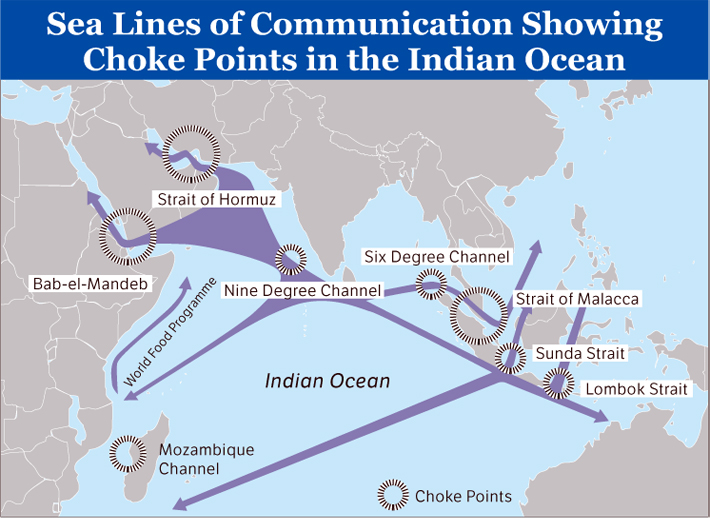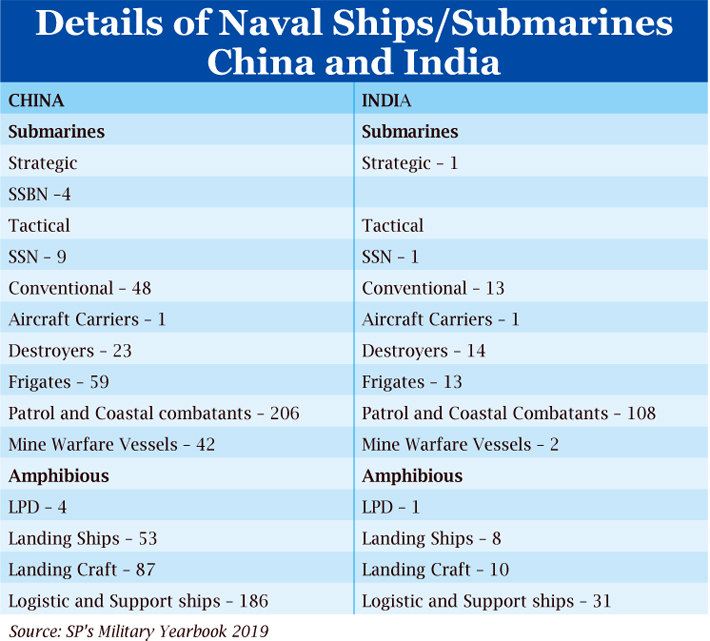INDIAN ARMED FORCES CHIEFS ON OUR RELENTLESS AND FOCUSED PUBLISHING EFFORTS

The insightful articles, inspiring narrations and analytical perspectives presented by the Editorial Team, establish an alluring connect with the reader. My compliments and best wishes to SP Guide Publications.

"Over the past 60 years, the growth of SP Guide Publications has mirrored the rising stature of Indian Navy. Its well-researched and informative magazines on Defence and Aerospace sector have served to shape an educated opinion of our military personnel, policy makers and the public alike. I wish SP's Publication team continued success, fair winds and following seas in all future endeavour!"

Since, its inception in 1964, SP Guide Publications has consistently demonstrated commitment to high-quality journalism in the aerospace and defence sectors, earning a well-deserved reputation as Asia's largest media house in this domain. I wish SP Guide Publications continued success in its pursuit of excellence.
- MoD initiates comprehensive review of Defence Acquisition Procedure 2020, pushes for defence reforms
- G7: The Swansong
- Kalinga Connect: South Asia to Polynesia
- Advanced MRSAM for India for a greater firepower
- Must Credit DRDO for Operation Sindoor, now what is next for defence R&D?
- Operation Sindoor | Day 2 DGMOs Briefing
- Operation Sindoor: Resolute yet Restrained
Lead Story
Protecting National Interests in Uncertain Times
A secure internal and external security environment, provided by the military and other agencies will facilitate sustained growth and development of the nation. There is a renewed interest from the world to engage with India in this region as the strategic need to preserve peace, promote stability and maintain security across Indo Pacific is no long a regional necessity but indeed a global imperative.
 | The author is former Chief of the Naval Staff (CNS) of Indian Navy. During his tenure as the CNS, he also served as Chairman of the Chiefs of Staff Committee. He retired on May 31, 2019. The Admiral is currently the Chairman of National Maritime Foundation. |

The strategic need for nations to protect and promote their national interest in a changing world order has been the centre piece of global strategic discourse for some time now. Linked to this aspect of national interest is the need to build one’s Military Capability to prepare for the array of security challenges that lie ahead and also the aspect of developing new partnerships, as the global order shifts from a unipolar model to a multipolar one. There is little dispute that the world today, is characterised by multi-layered and multi-faceted diversity from political, demographic, economic, environmental and strategic viewpoints.
Everything around us seems to indicate that the world is in another period of historical transition. Therefore, it would be a fair assumption that we are indeed living through a period of ‘strategic uncertainty’. The world also is in a grip of a global pandemic after a century and at the moment there is no end in sight with numbers growing in our country and the world lives in the hope of a vaccine, which is anywhere from 12 to 18 months away.
It may not be wrong to assume that a perfectly stable world order is a rare thing1.
The global order in which we live today has been built in the aftermath of World War II. Broadly speaking, this order consisted of two parallel orders for most of its history2. One, that grew out of the Cold War between the United States and the then Soviet Union. The other was the liberal order, which used aid and trade to strengthen ties and fostered respect for the rule of law both within and between countries.
Dealing with China in the future will need a comprehensive strategy, with a long term view that combines diplomatic, economic and military. It requires building of military capability so that the present asymmetry or differential does not further widen.
Coming to the present times, today’s competition between China and the United States is a new twist to an old story. Until the onset of the nineteenth century, China was by far the world’s largest economy, with an estimated 40 per cent share of global GDP3. Then it entered a long decline, and around the same time the United States was born and began its long ascent to global dominance. So both countries have dominated the world, each has its own strengths and weaknesses, and for the first time, each confronts the other as near peer4. It is too soon to tell how the innings ahead will play out. But we can be confident that the game will continue, as the world moves from an earlier unipolar or bipolar order to a multipolar one.

Strategic thinkers need to maintain a ‘long view’ and not be overly influenced by shortterm changes. This is particularly important since there may be a tendency to view developments over the last few years as a sign of the eclipse of a so called ‘stable world order’5. But in my opinion, that would be a mistake. Although the recent challenges should not be underestimated, it is important to recognise that they are closer to the rule than the exception. Great power rivalry is indeed the motor of history, and we shall have to protect our core interests in this phase too.
But, for that we would need to accurately assess as to where does India fit into this ‘new normal’. This is where, in my opinion, the present phase is different from earlier ones. While geopolitical rivalry and the quest for global dominance may have been a ‘signature phenomenon’ of the entire modern era, it is probably for the first time that we are sitting astride the centre-stage of this power competition– that of the Indo-Pacific.

The 21st century has witnessed an eastward shift in the focus of global geopolitics and economic power play6. In the recent past, the idea of Indo Pacific has gained immense importance in international geopolitics. Given the arterial trade and energy routes originating and passing through the region, several major players are making long-term investments to protect their energy interests hinging on this region. As an example to highlight the region’s growing geostrategic importance, it is interesting to note that about 80 per cent of the trade originating from here is actually extraregional. Unhindered flow of maritime trade through Indo Pacific region thus assumes tremendous significance for the entire world. Further, in pure economic terms, the Indo Pacific region contributes about 60 per cent of global GDP and is home to four of the top ten economies7 of the world. In military context, the region is home to the ten largest standing armies8 in the world and seven of the top ten countries9 in terms of global military expenditure. The rising military power of the region has come to complicate the security calculus in many ways.
The geo-strategic eminence of the Indo Pacific region is here to stay. In the foreseeable future, the region would play a pivotal role in shaping the global economic and security paradigms.
It is here that India has a definitive role to play in shaping the future world order. As we can see, there is a renewed interest from the world to engage with India in this region, as the strategic need to preserve peace, promote stability and maintain security across Indo Pacific is no long a regional necessity, but indeed a global imperative. It is this feature, which in my opinion, makes the present times different from earlier ones, especially from an Indian perspective. We have the opportunity to play a central role in the primary theatre of geo-strategic competition.
Every arm of the government, be it finance, foreign policy, defence, trade, commerce, or technology will have to work in unison to keep India’s national interests safe and secure, in these ‘contested times’.
Moving on, of course, this ‘uncertain’ world order affects India in profound ways. The challenges which it bring along are well known, there is a critical need to seize the strategic opportunities which these tectonic shifts offer. These opportunities cover the entire spectrum of global interactions, most prominent of them being in the economic, trade, technological and military domains. The growing stature and clout of India affords us the unique moment in history to play a major role in shaping the collective future of the world. If we aspire to be a regional power, it is but natural, that we would have to assume a leadership role in global affairs, the signs of which are already on the horizon. We are better positioned to influence the new global and regional institutions that are being created. The attributes of our strong economy, robust governance and superior military provide us the prospect of reserving our seats on the table which nurtures and shapes the global future.
It goes without saying that the ‘one and only’ driving factor of all our present and future endeavours should be ‘National Interest’. In fact, every measure that we initiate should have this facet at its very core. Safeguarding and promoting these interests would require a whole of government approach. Every arm of the government, be it finance, foreign policy, defence, trade, commerce, or technology will have to work in unison to keep India’s national interests safe and secure, in these ‘contested times’.

While each enabler supports our national interests in myriad ways, a secure internal and external security environment, provided by the military and other agencies, facilitates sustained growth and development of the nation. Be it on land, in the air or on the maritime theatre, a benign environment is a catalyst for national progress. In pure military terms, this will require building deterrence, both conventional and nuclear, protecting our sovereignty, in all domains, as well as maintaining a credible presence in all our areas of interest. Here, two aspects would merit consideration towards gearing for the future.
Firstly, it would be important to anticipate change and the need to do it well. Secondly, have an over-the-horizon approach towards our military capability building. In fact, achieving ‘Self Reliance in Defence Production’, particularly in the field of niche technologies should be a national mission.
But as we progress along this vision, partnering with like-minded countries would also play a key role since both the aspects that of anticipating change and capability building, would prosper well when followed through a collaborative route.
In this era of multi-polarity, is the growing relevance of regional balances and constellations. ‘Issue based convergence’ seems to be the new norm, in order to balance converging and conflicting interests. That means, differences with a partner on certain issues should not obviate the scope of our mutual cooperation in other avenues. We cannot be caught flat-footed by dogma, prejudices or obsolete theories. When we look to the world, we would need to have an open-minded approach which allows us to pursue different approaches with different partners. For example, while we may increase the tempo of our engagements with certain long-cherished partners, we may also need to manage our relationships with others. At the same time, we will also need to cultivate and enthuse new partners. Therefore, a one-size-fits all approach may not serve our purpose in the coming times. It is important that every partnership, both existing ones as well those on the anvil are optimally leveraged for ‘mutual growth’.
Distilling these thoughts into the military aspect, there are opportunities for India to engage with the world, particularly in the aspect of capability and capacity building. With our robust defence structures, supported by credible multi-domain proficiency, we are very well placed to play a central role in pursuing the Government’s foreign policy initiatives through militaryto-military engagements.
In this era of intertwined interests and challenges, it is imperative that we look at Leveraging military partnerships as an essential enabler for pursing and promoting our national security objectives. These partnerships not only offer us an array of tangible benefits ranging from operational to capability building, but most importantly they also allow us to hedge against the diverse security concerns, which pose serious challenges to the collective security.
Let us take the present situation on the LAC. There can only be two solutions, diplomatic or military. Diplomacy goes back to 1993 and over 22 meetings, the political leaders have met, but no solution has been found on the border dispute. A boundary not fixed or marked with a powerful neighbour like China lends itself to uncertainties when she can embarrass you at any time of her choosing, like the current situation on the LAC. When diplomacy does not work, then it calls for the armed forces. Can we enforce a military solution on China, unlikely due to the asymmetry in national power? We can certainly stand up in certain sectors and give them a bloody nose as in Galwan. But these situations can snowball into a war. Are we prepared for it? If not, then we need to bolster our military power, be present/deployed on our perceived LAC, increase the operational tempo of all the three armed forces and talk from a position of strength. We need to have a realpolitik approach to the issue and get all segments of national power to bear. We cannot continue to be in a reactive mode nor delink the boundary issue for the rest of our relationship with China, as it has not worked and is unlikely to. China aspires to be a global power and the regional hegemon in Asia where the only resident challenger is India.
Dealing with China in the future will need a comprehensive strategy, with a long term view that combines diplomatic, economic and military. It requires building of military capability so that the present asymmetry or differential does not further widen. Institutional mechanisms in New Delhi need a relook. Border management, information sharing, and higher defence management in the form of political/military leader’s linkages needs re-examination. We have signed a number of strategic partnerships with a number of countries, they need to be taken forward and given concrete shape. Invite Australia for the Malabar Exercise. The ‘Quad’ dialogue should be given greater emphasis. We could invite Indonesia, Vietnam, Philippines, and Malaysia along with Quad member for a larger Indo Pacific initiative, to ensure a free and open region, where the rule of law and democratic principles are reflected in a rules-based order, promote respect for sovereignty and territorial integrity. We need to leverage our strategic location in the Indian Ocean Region and maritime capability.
This crisis must be utilised to review our relationship with China and geopolitical and strategic challenges posed. In the end we will have to stand up for ourselves and be better prepared for the future.
References
1. R ichard Haas, ‘How a World Order Ends’, Foreign Affairs, Volume 99, Jan/ Feb 2019; 2. Ibid;
3. S tephen Kotkin, ‘Realist World’, Foreign Affairs, Volume 97, Number 4, July/ August 2018; 4. Ibid.
5. D aniel Deudney and G. John Ikenberry, ‘Liberal World’, Foreign Affairs, Volume 97, Number 4, July/August 2018.
6. Sircar, Saranya. Concept note on ‘The Indo-Pacific: Political, Security and Economic Dimensions’, available at https://www.jfindia.org.in/jf/wp-content/uploads/2018/09/Concept_Note_for_Young_Scholars_ _Conference_2019_on_Indo-Pacific.pdf
7. Top ten economies of the World, in descending order are US (1), China (2), Japan (3), Germany (4), UK (5), France (6), India (7), Italy (8), Brazil (9) and Canada (10); source IMF 2018, available at https://www.weforum.org/agenda/2018/04/the-worlds-biggest-economies-in-2018
8. Largest standing armies, in descending order are China (1), India (2), US (3), North Korea (4), Russia (5), Pakistan (6), South Korea (7), Iran (8), Vietnam (9) and Egypt (10); source World Atlas, available at https://www.worldatlas.com/articles/29-largest-armies-in-the-world.html
9. SIPRI Fact Sheet of May 2018 for 2017: US (1), China (2), Saudi Arabia (3), Russia (4), India (5), France (6), UK (7), Japan (8), Germany (9) and South Korea (10), available at https://www.sipri.org/sites/default/files/2018-04/ sipri_fs_1805_milex_2017.pdf





